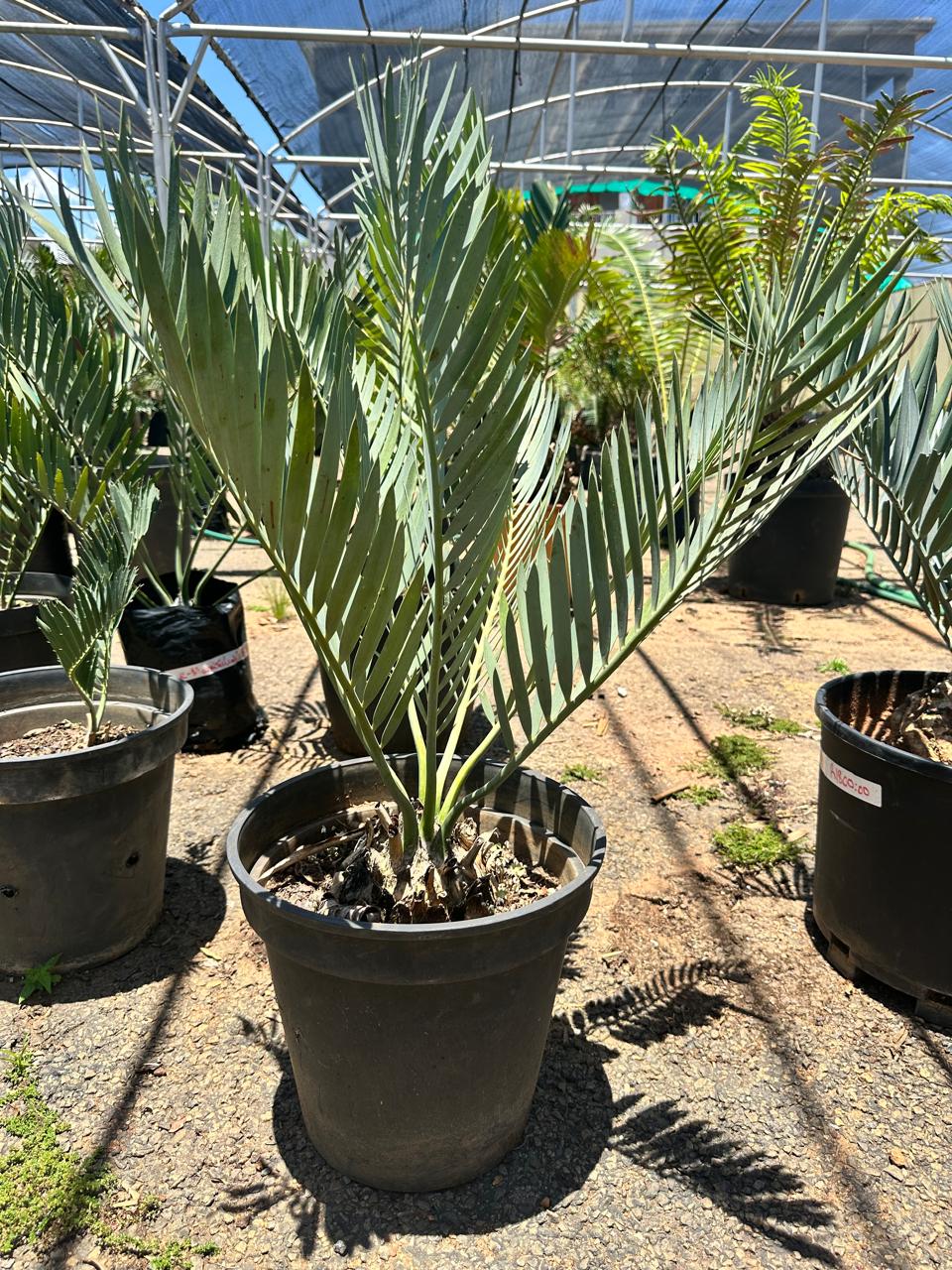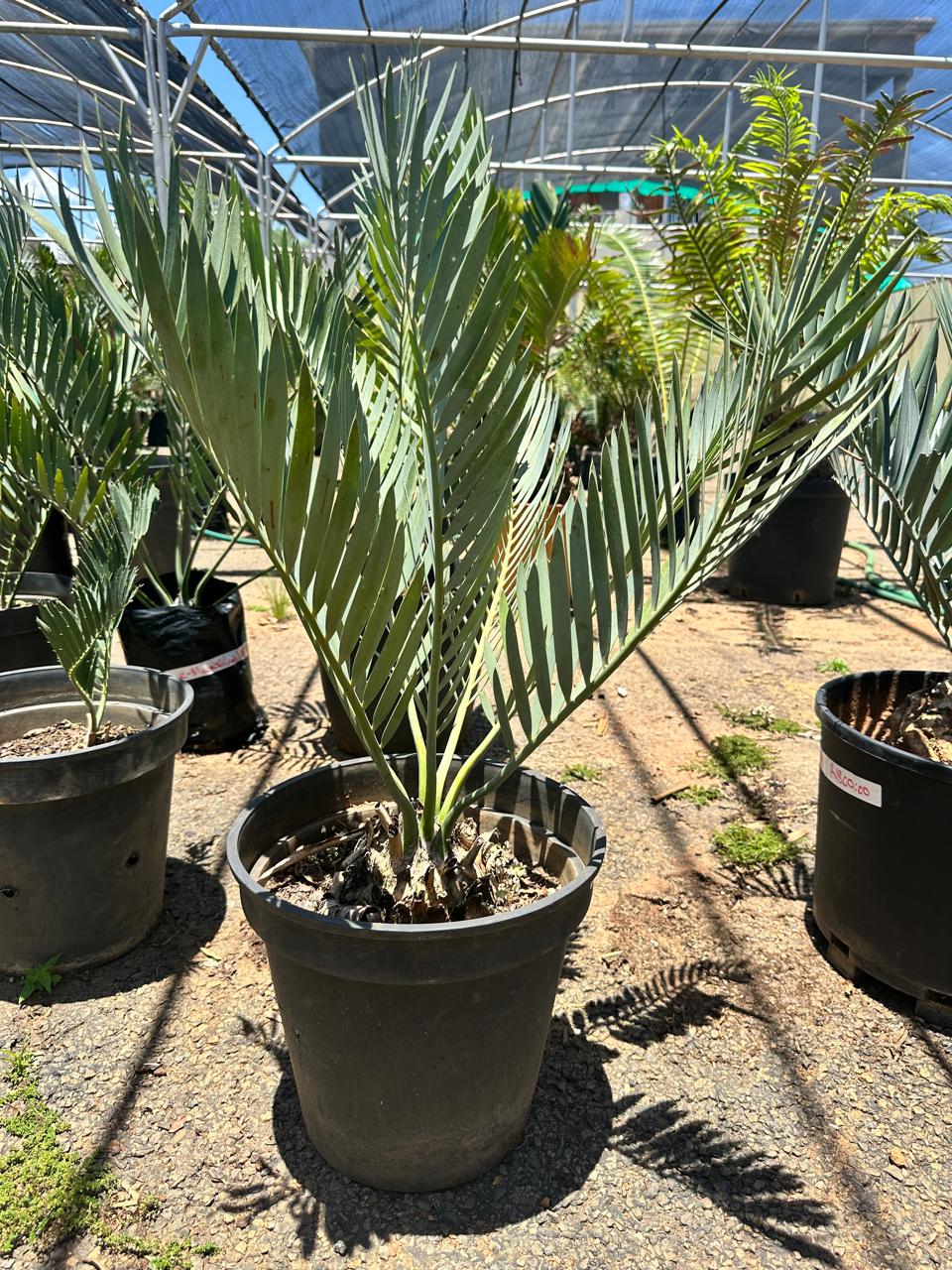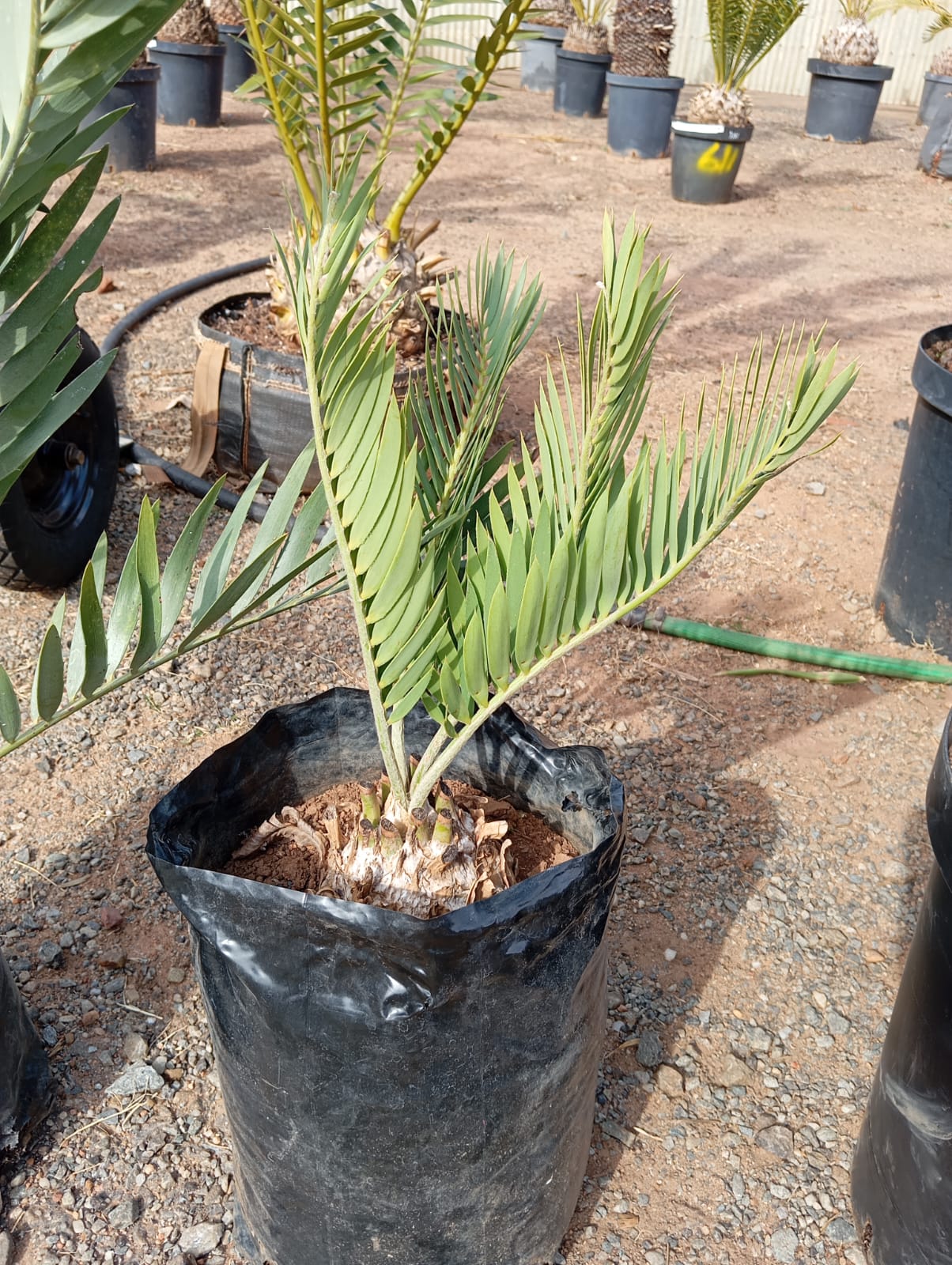
Encephalartos eugene-maraisii
The Waterberg cycad (Encephalartos eugene-maraisii subsp. eugene-maraisii) grows in the mountainous regions of the Waterberg and western Pietersburg districts in South Africa. It thrives on rocky ridges and steep grassy slopes in full sun. This subspecies shares its habitat with various plants, including the Waterberg aloe.
Cones
Female E. altensteinii plants produce 1-5 cones per crown. These cones are large, about 45-50 cm long and 25-30 cm in diameter, and have a distinct yellow color with a textured surface covered in fine, golden hairs. The seeds are orange-yellow. Male cones are smaller, measuring 40-50 cm in length and 12-15 cm in diameter. Up to three cones are produced per crown, although it's rare to see that many at once. The cones are borne on a peduncle up to 10 cm long.Both male and female cones of C. thouarsii are produced once per year. Female cones are 10-12 cm in diameter, borne on short peduncles, and green or red-brown when mature. Male cones are smaller, cylindrical, 15-20 cm in length, and covered with a fine woolly layer. They are attached to short peduncles. Both cones remain on the plant for several months before releasing seeds. Pollination is primarily wind-driven, but insect activity also plays a role, particularly in Madagascar populations.Female cones of the Waterberg cycad are large, egg-shaped, and typically 30-50 cm long and 16-20 cm broad. These cones are green at first, turning yellow as they mature. Male cones are smaller, subcylindrical, around 20-40 cm long and 6-8 cm in diameter, covered in fine brown hairs. Cone production is infrequent, with only a few cones appearing every few years. The cones, particularly in cultivated environments, may produce up to six cones per crown, though the typical production is much lower in the wild.
Leaves
The leaves of E. altensteinii are typically 2-3 meters long, forming dense crowns with numerous leaflets. These leaflets are leathery and have a glossy texture. The margins of the leaflets can be smooth or bear a few teeth near the base. In shaded environments, the leaves tend to elongate and soften, while in full sunlight, they become more rigid and compact. The new leaves are covered in fine hairs that give them a golden appearance, which disappears as they mature.The leaves of E. eugene-maraisii are 1.0-1.5 meters long and greyish-green in color, with a silvery bloom. They acquire a yellow tint with age. The median leaflets are 19-21 cm long and 1.0-1.5 cm wide, with 1-2 teeth or prickles along the lower margin. The leaflets taper toward the apex, and the base of each rachis has a distinct "collar" that helps differentiate this subspecies from others. The leaflets are usually smooth on both sides, and new leaves are covered with silky hairs that soon fall off.
Stems
The stems of E. altensteinii can grow up to 4 meters in height. These thick, robust stems often remain single but may occasionally branch out when stressed or damaged. The base of the stem swells slightly and is covered in old leaf bases, which provide structural support. The crown is densely packed with old leaf stalks and wool. In damp bushy environments, the stems are covered in lichens and moss, giving them a distinctive appearance.The stems of the Waterberg cycad are thick and robust, growing up to 45 cm in diameter. These stems branch from the base, forming clumps of multiple stems. The crown of the plant is densely packed with bracts and old leaf bases that help protect it. The surface of the stems is rough, with prominent scar patterns from fallen leaves. In areas with high baboon activity, the stems may suffer some damage, but the cycads are generally resilient to this and other environmental factors.


